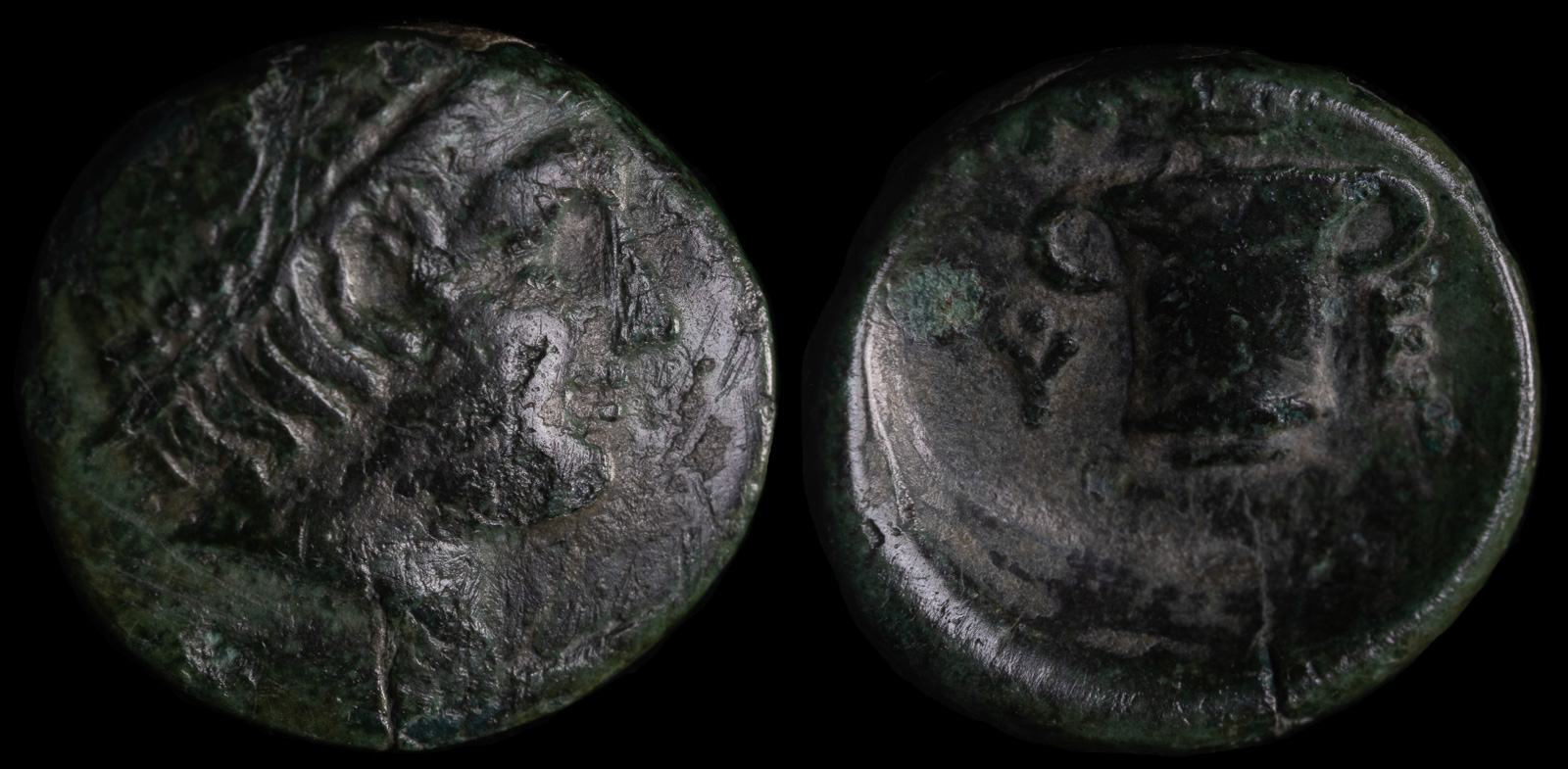
Thrace, Kypsela
circa 420-380 BCE
Æ 13 mm, 1,75 g
Obv: Head of Hermes right wearing petasos.
Rev: K – Y / Ψ – Ε.
Diota (cup with two handles); uncertain symbol above.
BMC 1 var. (pentagram above cup); SNG Copenhagen 532 var. (same); Mouchmov 3889a
Kypsela was the capital city for many of the Odrysian kings and was a center of power in Thrace for hundreds of years.
Ioannis Tzetzes wrote this about Kypsela:
CONCERNING THE MUCUS EARWAX
Slime, mucus, mucous discharge, discharge of liquid waste, mucous fluid,
Cypselos and cypsele, all these indicate the dirt secreted in the ears.
The beehives are also called cypselae.
But there is also the city of Cypsela, which took its name after some Cypselus,
Or because there are many beehives in that place.
And this is how Cypselus was given that name;
Being the son of Eetion, and, I think, of Labda,
His mother concealed him in a chest (cypsele),
Lest the Bacchiads should murder him. For they were searching for him.
Cypsele was indeed a spiral vessel.
Polyanos wrote the following:
Antiochus, son of Antiochus: When Antiochus besieged Cypsela, a city in Thrace, he had in his army many Thracians of good rank and family, who were commanded by Tiris and Dromichaetes. To those he gave gold chains, and arms studded with silver; ornamented with which, they marched out to battle. The men of Cypsela, seeing their friends and acquaintances so richly equipped, concluded that they had chosen the better side; so they threw down their arms, and went over to Antiochus, becoming allies instead of enemies.
Antiochos III besieges Kypsela until the locals join his army.
Sulla uses Kypsela as a base while Mithridates uses Pergamon, and between these places they meet.